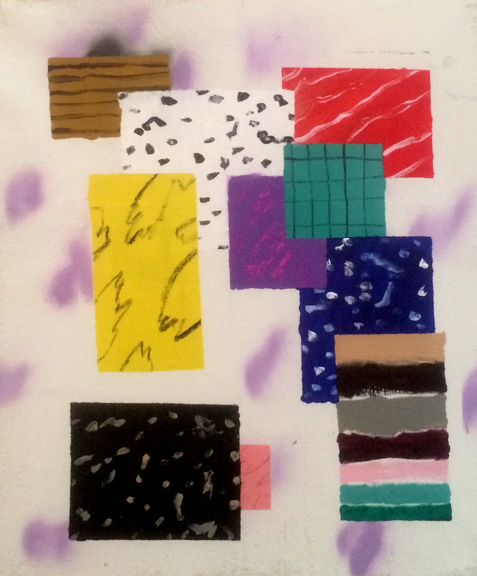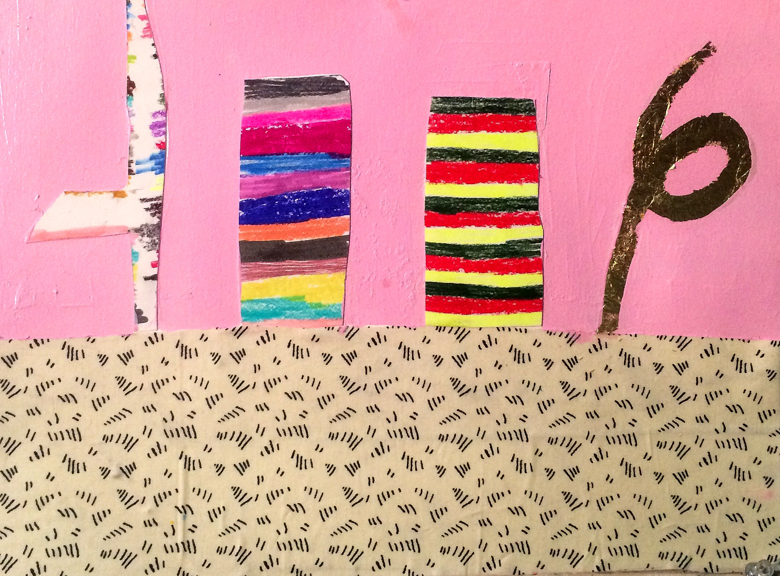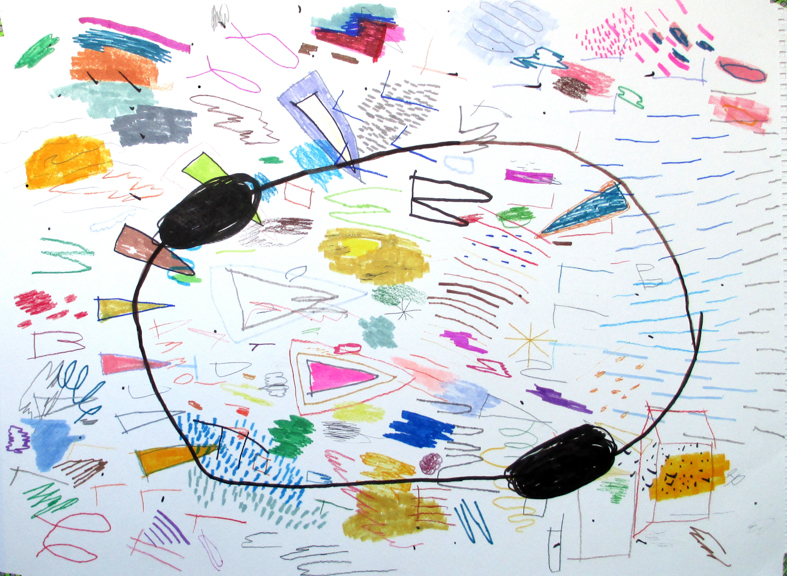Polly Shindler
Polly in her studio at The Vermont Studio Center in Johnson, Vermont
Polly Shindler (b. 1977, New Haven, CT) received her B.A. in History from The University of Massachusetts in 2001, her M.F.A. in Painting from Pratt Institute in 2011 and attended the Vermont Studio Center in 2013. She has shown recently at Momenta Art in New Work City, Second Family at 2 Rivington, Paper Jam at the Neuberger Museum and Family Ties: Brooklyn/Dallas at 500X in Dallas, TX. She is resident curator at Trestle Gallery in Brooklyn. Recent curatorial projects include Oracle, Star Gazer/Ancient Light, The Wanderers, Treasure Trove, One and Done and Future Folk Pt. 1 & 2 in Brookyn, NY. Polly was named one of “30 Artists to Watch in 2012” by NY Arts Magazine. She works out of her studio in Bushwick, has 2 cats and a dog.
Artist Statement:
I have been in the process of organizing my thoughts and methods. My current projects are a catalog of mark-making, grids of materials and movements in an attempt to control my space and categorize my time with gestures. Each pattern, list, box in a grid or patch in a quilt denotes a time, a small but significant area in which to record that moment. Diminutive lines converge to create a matrix of moments, signifying a passing of time, a journal of my marks. The mind works so quickly; this process has become my way of collecting thoughts in one place so I can reflect later. Each stroke is a time stamp and a reminder to create the space for big ideas. As they exist today, each painting and drawing is a conglomerate of line, variation and color, the assemblage of concepts.
Artist Interview:
Can you describe your working routine? Do you have a daily studio practice? What keeps you motivated?
I am only able to work without time restraints/pressure. I must have the entire day devoted to the studio. I manage to get in twice a week if I am lucky. I roll in leisurely and try to clean (not likely) and organize my thoughts. I have kept a studio religiously for 12 years, so it's just a given in my life. There are slumps and periods of lack of inspiration. During those times, I will draw at home and just keep my hand moving. Things spring up from there.
Can you give us some insight into your process? How do you begin? Do you keep a sketchbook/does drawing play a part in your work?
I have 2 separate art practices/studios. At home, I make plans—it's a dry room, meaning dry media on paper only. This is really where my paintings begin. I sketch and there is very little planning. Once I get into the studio, my thoughts are intact and I know where to begin based on the drawings I've done at home. Though the paintings rarely turn out exactly as planned, I have a vision in mind and I let the painting go where it wants.
How do you relate to time when you are in the studio? Does this relationship extend to your daily life outside of the studio?
Because I only go to the studio on my days off, there is no time. I put zero restraints on myself while I'm there. I don't have a very regimented life and I think being a painter is a part of that. I have to remain open to inspiration.
What materials and methods do you feel allow you to explore gesture and mark-making most organically?
I love a good hard pencil or an inky pen. Allowing my hand to see what the pen wants to do leads the way. I have attempted to replicate this ease with paint but it rarely translates. It's a different animal. I used to drag my palette knife through the paint to create the kind of line I can make with dry material but I have been trying more to draw with the paintbrush.
What interested you initially in visual grids and compartments? Were quilts and textiles an influence?
This answer is three-fold.
1 ) I used to make bad quilts in that they were shoddily made. My favorite part was selecting the fabrics. I loved that in quilting, the patterns were supposed to co-mingle, without the worry and fear of distraction and disparity.
2) My mind can race quite a bit and in an effort to not overlook anything, I began to categorize and make lists of marks and line. The grids were a by-product of this organization.
3) Instagram. Doing a search of images creates an outrageous, disjointed mosaic and I loved the way it looked. The random display of odd colors next to each other, paintings next to selfies, really made for an interesting read.
Are there a few artists that you are looking at currently?
Ooof. Just to name a few in no order... Rebecca Morris, Pearl Blauvelt, JD Banke, Dylan Roberts, Ken Grimes, Sasha Pichushkin (not his real name), Bill Traylor, Aimi Sakata, Milton Avery, Katherine Bradford, Esther Pearl Watson, Katherine Bernhardt, Matisse, Iain Dean, Charles Burchfield, Paul Wackers, Shara Hughes. I love children's drawings.
What do you listen to while you work? Any music or podcasts we should check out?
I will listen to music for energy (The Bee Gees, Black Keys, Britney Spears, Townes Van Zant, The Band, Gram Parsons) but when I first get to the studio, I like to catch up on my stories: I am a podcast junky. I listen to the Nerdist, Freakonomics, Fresh Air, Vulture TV, Death, Sex & Money, Pop Culture Happy Hour, Dear Sugar and several Mad Men podcasts which are now defunct :(
You are one of the resident curators at Trestle Gallery in Brooklyn. How did you become interested in curation and how does being involved with a gallery affect your practice as an artist? How does this relate to our current reliance on technology and the role of social media in the life and career of an artist?
Artists can reach a lot more people now of course. We all want feedback and posting new work is a great way to get it. Granted it's not critique but it's more than most of us are able to get after graduation. Technology has put me in contact with artists and collectors everywhere, some of whom I have traded with, some I've put into shows. It has made the world smaller. That is how I got into curating (with my partner, Will Hutnick). I wanted to see these works I was seeing online in person and in tandem with one another. It was the desire to create a conversation between the works and getting more eyes on the work I thought deserved it. We found temporary venues that were wonderfully generous but we were only allotted a few days, maybe a week, which was difficult. With our residency with Trestle Projects in Gowanus, Brooklyn, we were given free reign to create our own program with no limitations for a year.
Thank you so much for taking the time to share your work and talk with us!
To find out more about Polly and her work, visit her website.
Check out her curatorial work at Trestle Projects.













